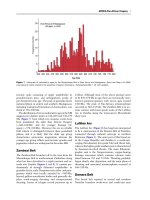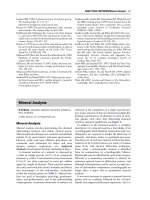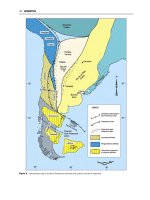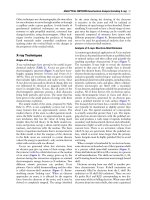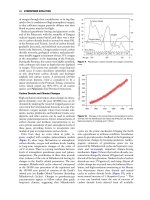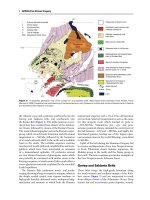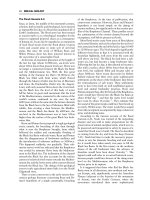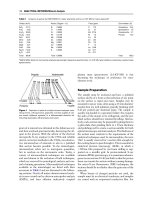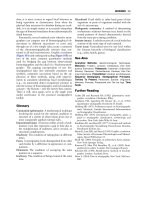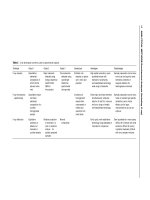Encyclopedia of geology, five volume set, volume 1 5 (encyclopedia of geology series) ( PDFDrive ) 2312
Bạn đang xem bản rút gọn của tài liệu. Xem và tải ngay bản đầy đủ của tài liệu tại đây (78.15 KB, 1 trang )
RUSSIA 469
Figure 10 Tectonics of the Verkhoyansk Chukotka Orogenic Collage (compiled by Yakubchuk and Nikishin). Note oroclinal structure
of the collage. Mid Cretaceous Okhotsk Chukotka Arc stitched the terranes that constitute the collage. Terranes of the Koryak
Highlands represent an accretionary wedge that formed in front of this arc.
evolved from the Early to Middle Palaeozoic until the
Cretaceous. In the north, it is bounded by the Hyperborean Craton. To the south-west is the Siberian
Craton. The eastern boundary of the collage coincides with the Okhotsk-Chukotka Andean-type arc
that stitched various terranes in the Late Cretaceous.
The Hyperborean Craton is a possible fragment of
the North American Craton. It was incorporated into
the collage after spreading in the Canadian basin
in the Late Jurassic to Early Cretaceous. Plate tectonic
reconstructions suggest that its arrival in the Early
Cretaceous was the major reason for the amalgamation of the Verkhoyansk-Chukotka Collage. This
craton occurs almost completely in the shelf zone,
and its small fragments are exposed in eastern
Chukotka, Novaya Sibir, and the Wrangel Islands.
In the south, it is bounded by the deformed passive
margin terrane of Chukotka and Arctic Alaska. It
consists of Triassic-Jurassic terrigenous rocks deformed in the Early Cretaceous. In the south, the
Chukotka Terrane is bounded by the South Anyui
Suture, hosting Late Palaeozoic to possible Early
Mesozoic ophiolites and accretionary wedges.
The Verkhoyansk passive margin is a mirror image
of the Chukotka Terrane, but it includes Ordovician
to Middle Jurassic turbidite sequences which are present in the imbricated structure thrust onto the
Siberian Craton. These assemblages extend along the
north-east margin of the Siberian Craton and can also
be traced along the western flanks of smaller cratonal terranes of Okhotsk, Omolon, and Prikolyma,
forming the Kolyma Orocline.
The Verkhoyansk passive margin rocks are structurally superimposed by the Jurassic accretionary
terranes. Inside them, in the core of the Kolyma
Orocline, are the Early Palaeozoic carbonate terranes
